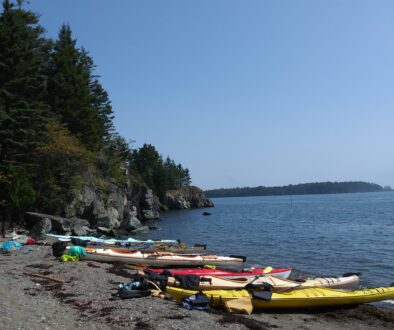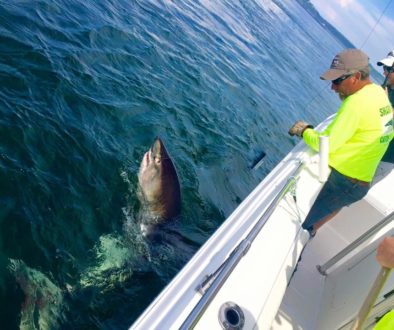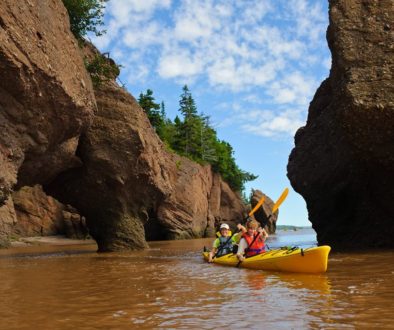Quoddy Link Marine
Harbour porpoise play in the wake left behind the M/V Quoddy Link, the catamaran whale watching vessel out of St. Andrews, NB as it glides across the Passamaquoddy Bay. The deck of this vessel is where Danielle Dion, senior naturalist and marine biologist with Quoddy Link Marine has spent the summer months for almost 20 years.
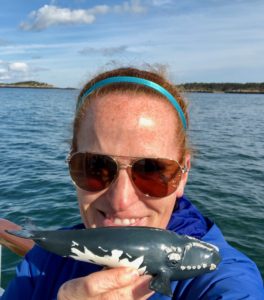
Danielle’s love of the ocean began at a young age with a keen interest in whales and dolphins. She studied marine biology at the University of Guelph in her home province of Ontario, where she became fascinated with the entire marine ecosystem. It was during her studies that she was introduced to St. Andrews and the Bay of Fundy while attending field courses through the Huntsman Marine Science Centre.
Danielle’s main role is education. It is her hope that guests leave the Quoddy Link with a better understanding of the dynamic waters of the Bay of Fundy and wildlife that call it home. She collects important data that is donated to research organizations to help study whale population structure and movements as well as the health of individual whales. She also documents any special sightings such as shark, dolphins, turtles, and birds.
Over the years Danielle has had the chance to help name North Atlantic right whales and humpbacks from the Gulf of Maine population. Danielle says, “When it comes to naming whales you have to get creative and make sure the names are easy to pronounce, they are culturally sensitive, and they can only be used once”. She has personally named three right whales- Cello, Cottontail and Sickle. Right whales are often named for the pattern of callosities- the rough patches of skin on their head, scarring, or even a location if the individual was sighted somewhere unusual.
When asked the importance of naming whales, she explains, “North Atlantic right whales are given names for ease of ID in the field and to show a more emotional side in the media. The public may hear a name such a Clipper and possibly gain a greater connection to her and her story as opposed to hearing only her number, #3450”. Sadly, Clipper was killed in the Gulf of St. Lawrence in 2019, a summer that saw 10 known right whale deaths within Canadian and American waters. Following an investigation, it was determined that her cause of death was most likely the result of a vessel strike. Danielle continues, “each right whale is given a number when they are officially added to the North Atlantic Right Whale Catalog. The numbers can provide a lot of information such as year of birth and a clue to the identity of the mother.” The catalog is open to the public; you can explore it here.
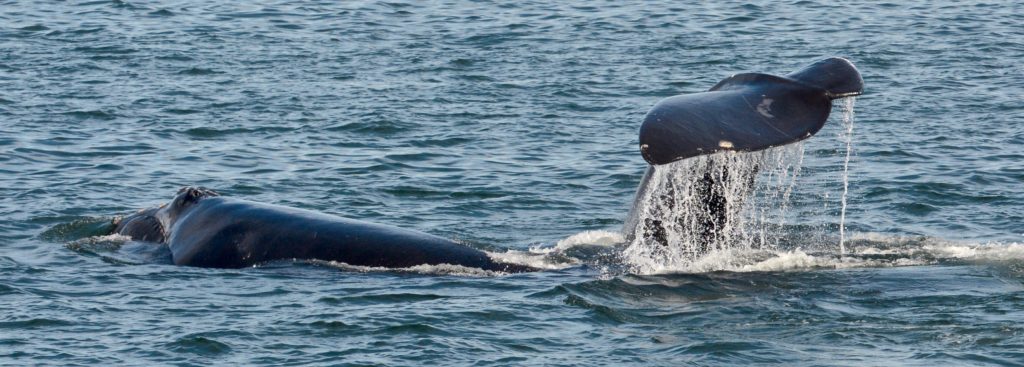
While reflecting on her experiences with right whales over the years, Danielle says a trip in 2009 was particularly memorable. “It was a foggy morning as we headed out on a special extended right whale trip that took us into the open Bay of Fundy, to the old shipping lanes, which were moved in 2002 to protect right whales. We found the right whales by listening for their exhales and moving very slowly. We found a few whales and then the fog lifted, and we could see we were surrounded. I had to encourage our passengers to put their cameras down and just look, look with their eyes and not through their cameras. You could see tails and blows in every direction. After speaking with researchers that day, who were also out on the water, there were close to 100 right whales in the area. It was a truly magical experience, to be surrounded with almost a quarter of the worldwide population. It’s something I will never forget.”
Right whales are a critically endangered species, meaning they are only a step away from extinction, with a worldwide population of around 400 individuals. The low numbers and the troubles they face are mainly human-caused, with entanglements and vessel strikes being the most common cause of death. Danielle believes we all need to do better when it comes to protecting right whales. “I understand that this all sounds like doom and gloom and there is no hope, but there is! These whales have adapted, and quickly. They found their shifting food and moved from Fundy to the Gulf of St. Lawrence. Their population can increase like it did in the 2000’s but the entanglements and ship strikes need to stop as they cause immense stress and even death.”
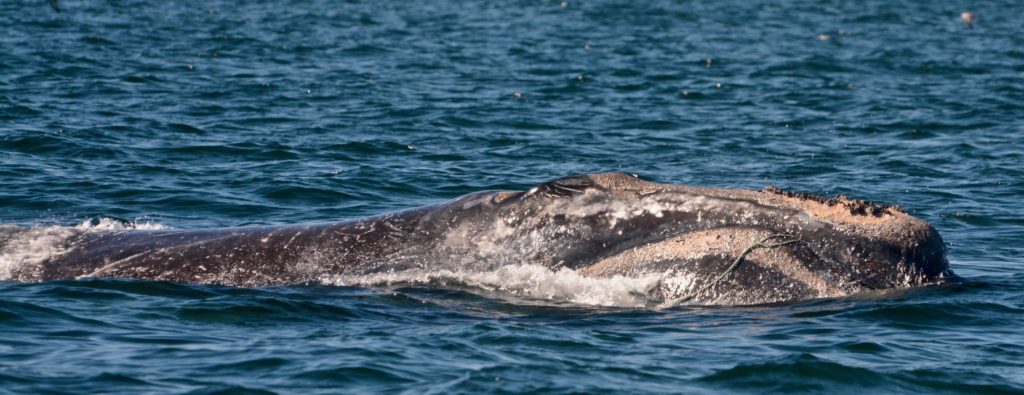
Danielle knows people protect what they love and understand and encourages people to get out and explore New Brunswick. She says, “walk the beaches at low tide and gently turn rocks over to find sea stars and crabs or grab some binoculars and look for birds in the forest, at the beach or in your backyard. Join your local nature club and possibly meet some like-minded passionate people. And if you can, get on a boat. And, if you come face to face with a whale don’t forget to put that iPhone down and look with your eyes, listen to the exhale, smell the ocean air and maybe even whale breath! It’s an experience you will never forget!”
We agree Danielle, there is nothing better than fresh salty air and the sound of whale blows. We hope to see you on the water this summer!
Make sure to follow Quoddy Link Marine on Facebook to keep up to date on the 2020 season and their most recent COVID-19 updates.
Header photo by Nick Hawkins.
We need your help! Take ACTION for the critically endangered North Atlantic right whale. Let the Government of Canada know you support an improved Action Plan- one that truly protects these special animals. Learn more and write your letter here: https://rightwhaletosave.org/en/


